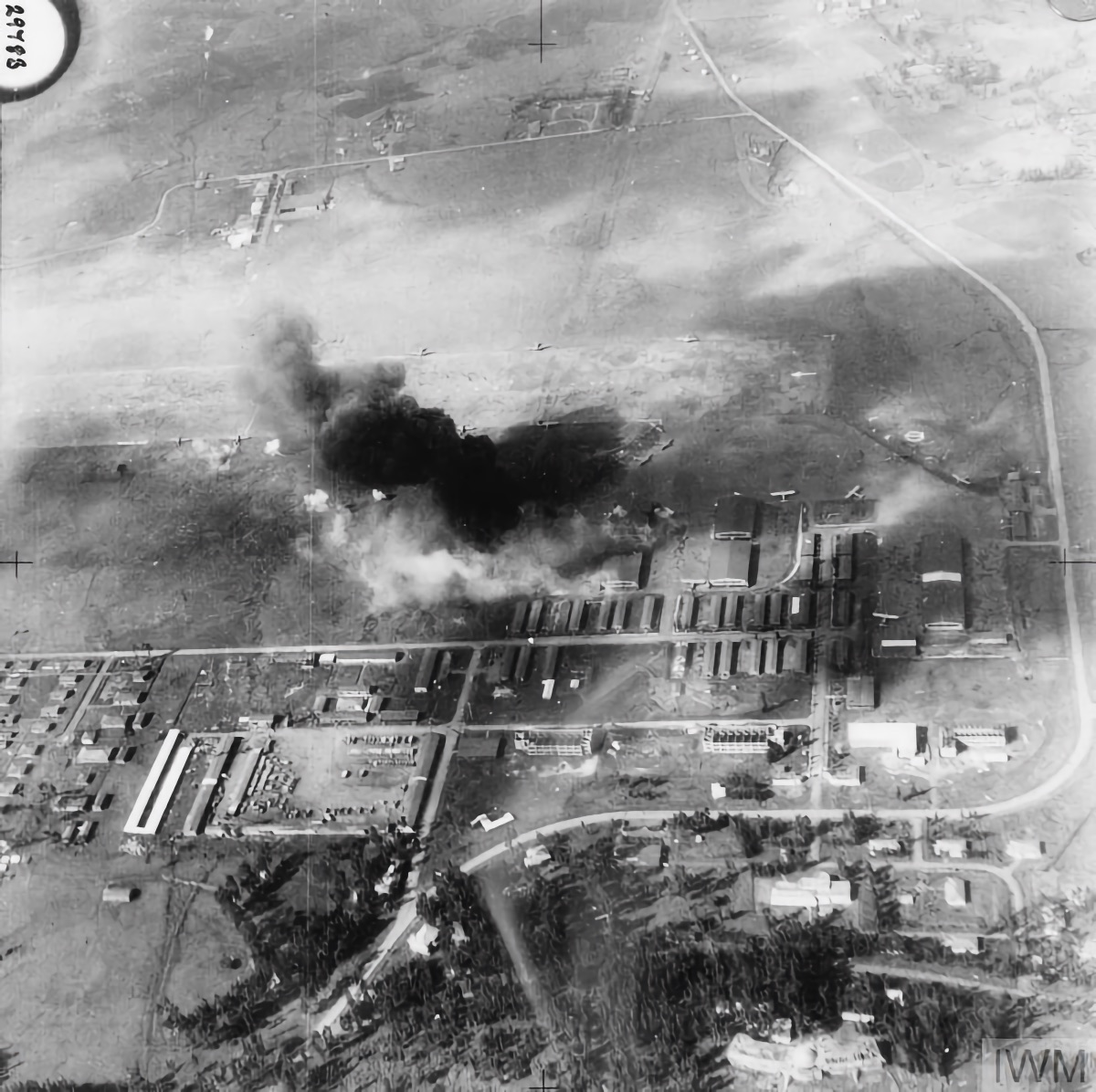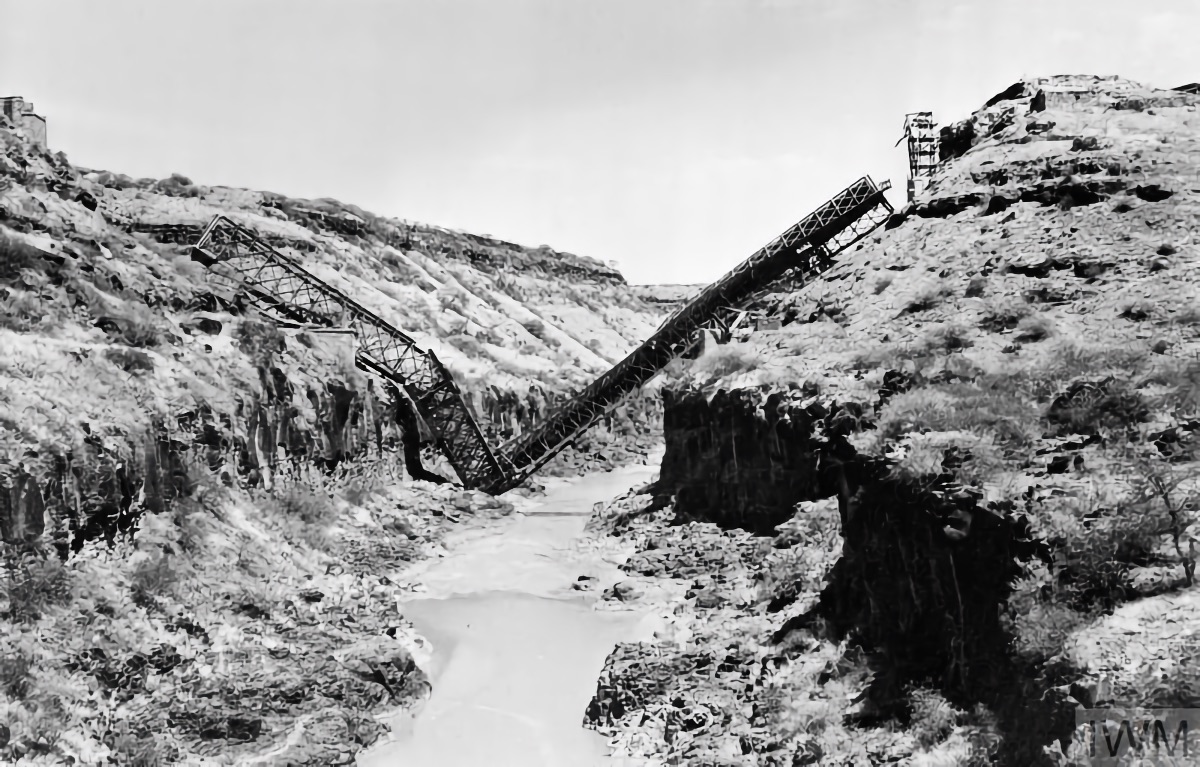Fg Off. Peter Møller
(1916 - 1941)
Profile
Fg Off. Peter Møller joined the Royal Air Force before the war. He was born in Denmark but became a British subject in December 1938. He served in the Middle East, and was killed over Ethiopia on 28 March 1941.
Peter Møller was born on 15 January 1916 in Frederikshavn, the son of merchant and bank director Laurits Peter Leopold Møller and Jennie Childs Møller (née Smith).[1] The parents had married in Sunderland, England, in 1907, but later that year, the parents returned to Frederikshavn, where Møller’s father took over the family business.[2]
In Royal Air Force service
Møller moved to the United Kingdom at some point. He was naturalised as a British Subject on 3 December 1938 and, at that point, the worked as a clerk and lived in London.[3] He enlisted in the Royal Air Force before the war. The exact date is not clear, but he was granted a short-service commissions a Acting Pilot Officers on probation for six years on the active list on 8 July 1939.[4]
Møller trained as a pilot. He was promoted to Pilot Officer (on probation) on 20 February 1940,[5] and confirmed in this appointment on 15 May 1940.[6] He was posted to 203 Sqn based at RAF Khormaksar in Aden, Yemen, in late 1940/early 1941.

East Africa Campaign
In 1935, Italy had occupied Abyssinia (Ethiopia) giving way to Mussolini’s proclamation of Italian East Africa (Africa Orientale Italiana) merging Abyssinia with Italian Somaliland and Italian Eritrea. On 10 June 1940, Italy declared war against Britain and France. It was of vital strategic importance to the British to protect the supply routes through the Suez Canal and the Red Sea. Accordingly, Egypt was the centre of British power in the area, but East Africa was important as well as hostile Italian presence along the Red Sea coast would be a threat the supply routes through to India and the Far East. The French collapse in June 1940 only increased the importance East Africa as supremacy in the Mediterranean no longer could be based on British-French cooperation and the French naval bases in the area. The French forces in French Somaliland collapsed on 27 July having until then promised to fight on. This released the full force of the Italian Eastern Army against British Somaliland.
In July 1940, Italian forces seized border towns in Sudan to the north and Kenya to the south. Italian troops crossed the frontier on 5 August 1940, and following a brief campaign, the British forces evacuated by ship from Berbera in British East Africa on 19 August 1940, and the British colony was annexed to Italian East Africa. The next couple of months, the British were planning a counteroffensive in the area, and on 19 January 1941, British Commonwealth forces advanced from Sudan into Eritrea at Kassala which had been occupied by the Italians soon after the outbreak of war.
Into operations
Blenheims of 203 Sqn among other squadrons from Aden were supporting the campaign by the bombing of Italian troops and aircraft. This squadron was equipped with Blenheim IVFs armed with light bombs and under-slung machine guns.
Møller flew his first operational mission on 11 February 1941. Seven aircraft from the squadron flew to the advanced landing ground Ras al Ara, some 30 miles from Khormaksar on the 10th. Six Blenheims took off from Ras al Ara the following morning, while one spare aircraft remained. Møller took off in Blenheim IV L9216 at 0655 hrs and set course for aerodrome at Addis Ababa. The Blenheims bombed hangards at the aerodrome in two flights and returned undamaged to Khormaksar at 1250 hrs.[7]

Six days later, Møller Møller participated in a bombing attack on the Awash Bridge, a bridge on the Addis Ababa-Djibouti railway. Twenty-four 250 lbs bombs were dropped in the attack.
Two pillars of the bridge are believed damaged and one bomb fell hear the bridge head. A shed near the bridge received a direct hit. The remainder of the bombs fell near and around the bridge.[8]
Møller took off in L9216 at 0810 hrs and returned to base at 1345 hrs. Three aircraft bombed the railway bridge again on the 26th. Møller’s crew was one of four crews to fly to Ras al Ara for the operation, but they returned without participating in the operation.
Møller was promoted to the war substantive rank of Flying Officer on 20 February 1941.[9] The following day, the aerodrome at Diredawa was bombed by six Blenheim IV’s from 203 Sqn and six Blenheim I’s from 8 Sqn. The aircraft godt into cloud near the target which dispersed the formation. Møller’s was part of No. 1 Flight, which reformed and continued the arrack. Their bombs fell on the railway line in the vicinity of the railway station and in the European quarter of the town.[10]
In the afternoon of 23 February 1941, four aircraft flew to Ras al Ara where they remained the night in readiness for a dawn take off the next day. Three aircraft—including Møller’s crew in L9216—carried out a bombing attack on Addis Ababa aerodrome and buildings. The attack caused considerable damage to buildings around the aerodrome and an aircraft was set on fire by an incendiary bomb. An Italian Fiat CR.42 Falco fighter attacked the formation from 400 yards, but did not score any hits. L9216 returned to Aden at 1210 hrs.
After a short break from operational sorties, Møller carried out a reconnaissance of the Eritrean coast and Abbas in Blenheim IV T2072 on 9 March 1941.[11]
On 16 March 1941, the British, Empire and Commonwealth forces launched a beach landing at Berbera in British Somaliland, on 16 March 1941 (Operation Appearance). In the coming weeks several of the squadron’s aircraft were lost as the Allied became engaged in fierce fighting on the ground. Møller was one of these casualties. He returned to the air on 19 March 1941, where the crew carried off a fighter patrol from 940 to 1550 hrs.
Møller carried out ground strafing operations on 22, 23, and 26March 1941. The first day they attacked motor transport and a trains on the road and railway between Miesso and Biche. The following two operations were carried out in a similar manner.
On 28 March 1941, Møller took off from Khormaksar in Blenheim IV T2255 at 0705 hrs for a long-range sortie, a reconnaissance mission over the Awash-Adama area of Ethiopia. The The aircraft was hit by flak and crashed near Awash. The crew of three was killed. Apart from Møller it was Sgt G.E. Salisbury (751754), with whom Møller flew for the first time, and Sgt W.A. Davidson (749590), who had accompanied him on nearly all operations.[12]
Endnotes
[1] DNA: Parish register, Frederikshavn Sogn.
[2] Bandholm, P. (2012). Folk på vejen - før og nu : historier bag navnet.
[3] NA: HO 334/151/12976, Naturalisation Certificate: Peter Moller. From Denmark. Resident in London. Certificate AZ12976 issued 3 December 1938.
[4] London Gazette, issue 34649, p. 5214, 28 July 1939, https://www.thegazette.co.uk/London/issue/34649/page/5214.
[5] London Gazette, issue 34838, p. 2474, 26 April 1940, https://www.thegazette.co.uk/London/issue/34838/page/2474.
[6] London Gazette, issue 34892, p. 4178, 9 July 1940, https://www.thegazette.co.uk/London/issue/34892/page/4178.
[7] NA: AIR 27/1198.
[8] Ibid.
[9] London Gazette, issue 35106, p. 1524, 14 March 1941, https://www.thegazette.co.uk/London/issue/35106/page/1524.
[10] NA: AIR 27/115 and AIR 27/1198.
[11] NA: AIR 27/1198.
[12] Ibid.